
THE ROYAL NAVY operated over 2,000 F4U Corsairs during World War Two. It was flying them from aircraft carriers when the U.S. Navy had declared the aircraft unsuitable for deck operations.
“Of all the aircraft I had seen, it was the most wickedlooking bastard. It looked truly vicious. I saw no reason why a Corsair shouldn't kill me and that day I sat down and typed my last will and testament.” Lt. Norman Hanson, RNVR 1833 NAS later Lt. Cdr. DSC), July 1943
Fighters for the Fleet Air Arm
At the start of WW II in September 1939, the British Royal Navy's Fleet Air Arm consisted of 20 Naval Air Squadrons with just 232 aircraft. In the early part of the war, the Royal Navy's fighter aircraft requirements were met by cumbersome two-seat designs, such as the Blackburn Skua and the Fairey Fulmar, on the assumption that the only opposition they would meet would be long-range bombers or flying boats. When actual operations, particularly in the Mediterranean, proved this to be a false assumption, the Royal Navy hurriedly adopted higher performance, single-seat fighter aircraft, such as the Hawker Sea Hurricane and the rather fragile Supermarine Seafire, both modified, hooked versions of RAF land-based fighters. However, neither of these types had sufficient range to operate at any great distance from a carrier task force.
During the early war years, the Royal Navy RN) acquired some batches of American aircraft built for other countries, such as France, Belgium and Greece, which did not reach their intended buyers due to the German advances in Europe. Most notably, the Grumman F4F Wildcat, initially known as the Martlet"” by the RN, entered Fleet Air Arm FAA) service this way, and on December 25, 1940, a Martlet from 840 Naval Air Squadron NAS) was the first U.S. fighter in British service to shoot downa German aircraft.
Denne historien er fra November - December 2022-utgaven av Flight Journal.
Start din 7-dagers gratis prøveperiode på Magzter GOLD for å få tilgang til tusenvis av utvalgte premiumhistorier og 9000+ magasiner og aviser.
Allerede abonnent ? Logg på
Denne historien er fra November - December 2022-utgaven av Flight Journal.
Start din 7-dagers gratis prøveperiode på Magzter GOLD for å få tilgang til tusenvis av utvalgte premiumhistorier og 9000+ magasiner og aviser.
Allerede abonnent? Logg på
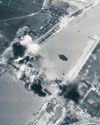
A-26 BRIDGE BUSTER
Courage under fire in North Vietnam
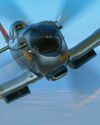
Spitfire FIGHTER-BOMBERS
The iconic fighter was surprisingly effective in other roles
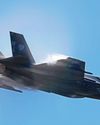
"BAT WING" LIGHTNING
The Charlie-Model F-35
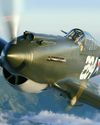
OUTGUNNED & OUTMANNED
A losing battle against a well-equipped foe
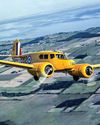
Wichita Wonder
Cessna’s I-50 proves to be astonishingly necessary for RCAF trainees
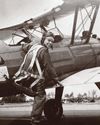
WARRIORS REMEMBERED
Families gather in England to pay tribute to a fallen WW II aircrew
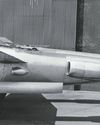
Lockheed XP-49: Trying to Do the P-38 One Better
IT MADE NUMEROUS TEST FLIGHTS and at least one cross-country journey, yet no air-to-air picture of it appears to have survived.

Keeping 'em Flying!- The new generation of warbird pilots, restorers and mechanics
The new generation of warbird pilots, restorers and mechanics. Nearly 80 years after the end of World War II, the fighters, bombers, and trainers that defended freedom continue to enthrall and inspire audiences at airshows, thanks to generations of warbird pilots, maintainers, restoration specialists and collectors. In our September, 2022 issue we introduced you to the young warbird pilots, maintainers and restorers who are already beginning to displace more "experienced" warbird fliers and fixers.

The Corsair Maker- Bringing the Vought Corsair to the fleet was a daunting challenge that spanned nearly three years.
When the first production Corsairs exited the Stratford factory in June 1942, Guyton, as seen here, was tapped to manage the flight and production test program. Armament was improved to six wing-mounted .50s, displacing the wing fuel tanks now placed forward of the cockpit which necessarily was moved rearward by 32 inches. Overall length was increased, armor plate added, landing, arresting and tail gear improved, aileron control enhanced, and a new version of the R2800 engine was incorporated. But those significant improvements unearthed numerous idiosyncrasies that would take an extended period to make the Corsair acceptable for carrier operations

STARFIRES Over Korea
F-94 pilots tangle with MiGs